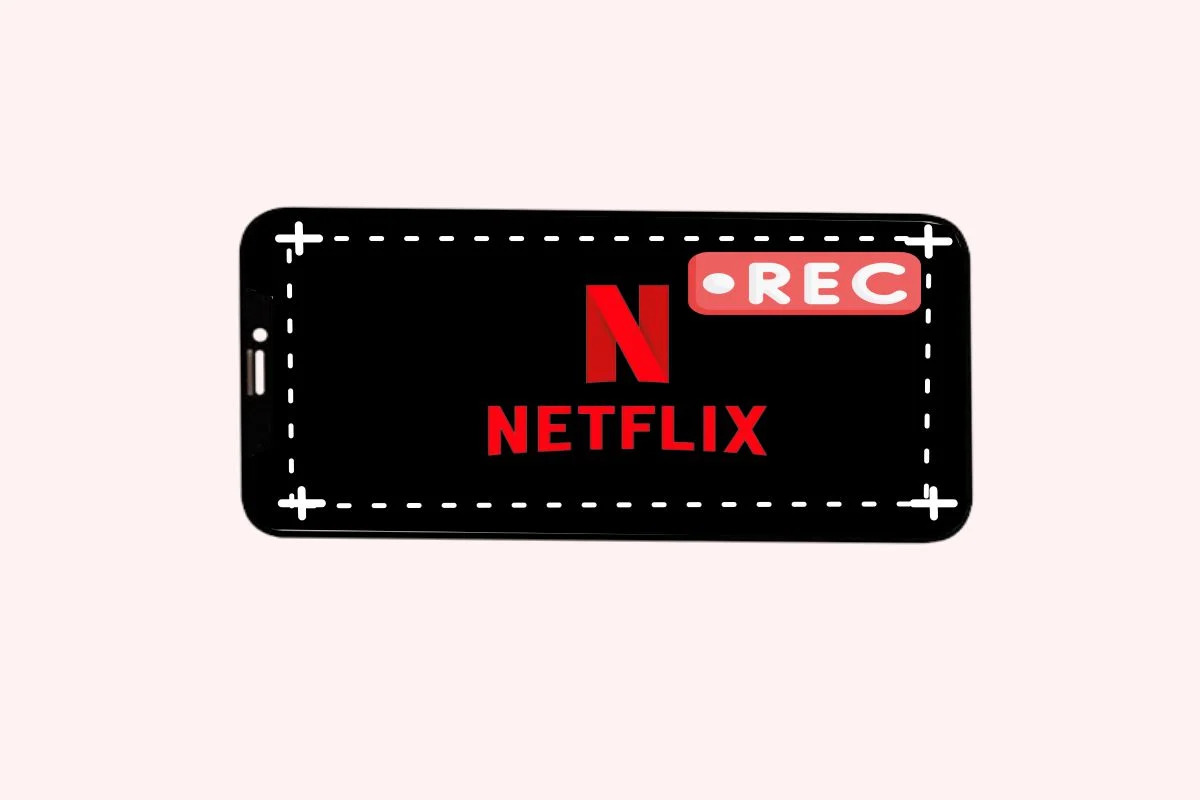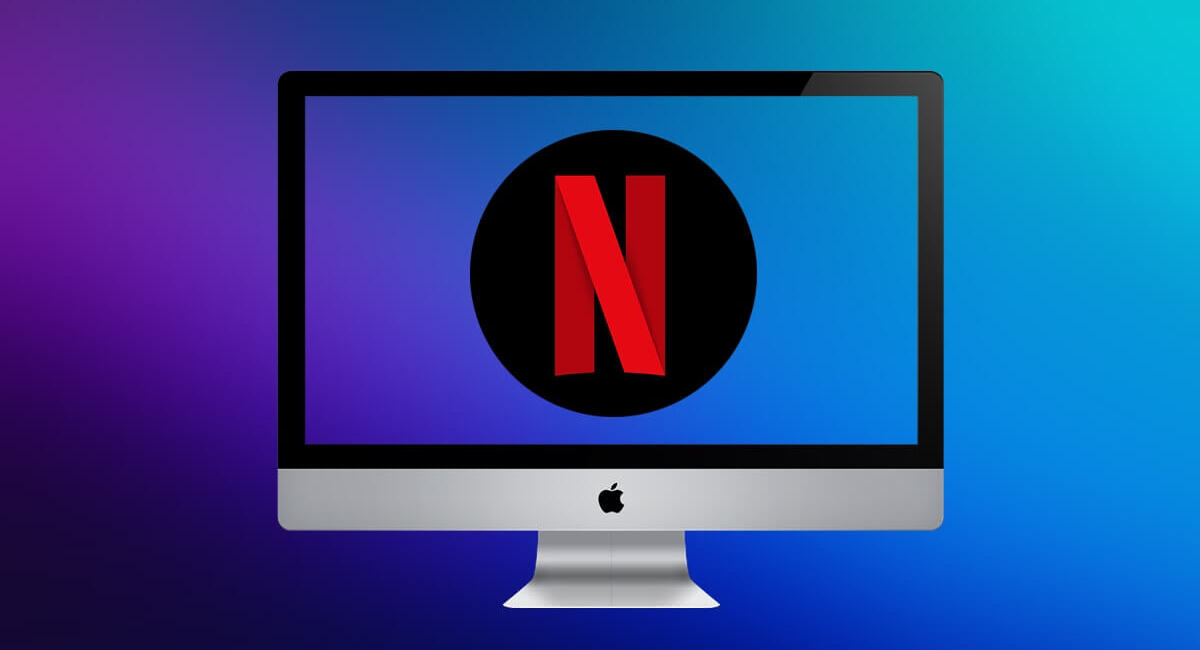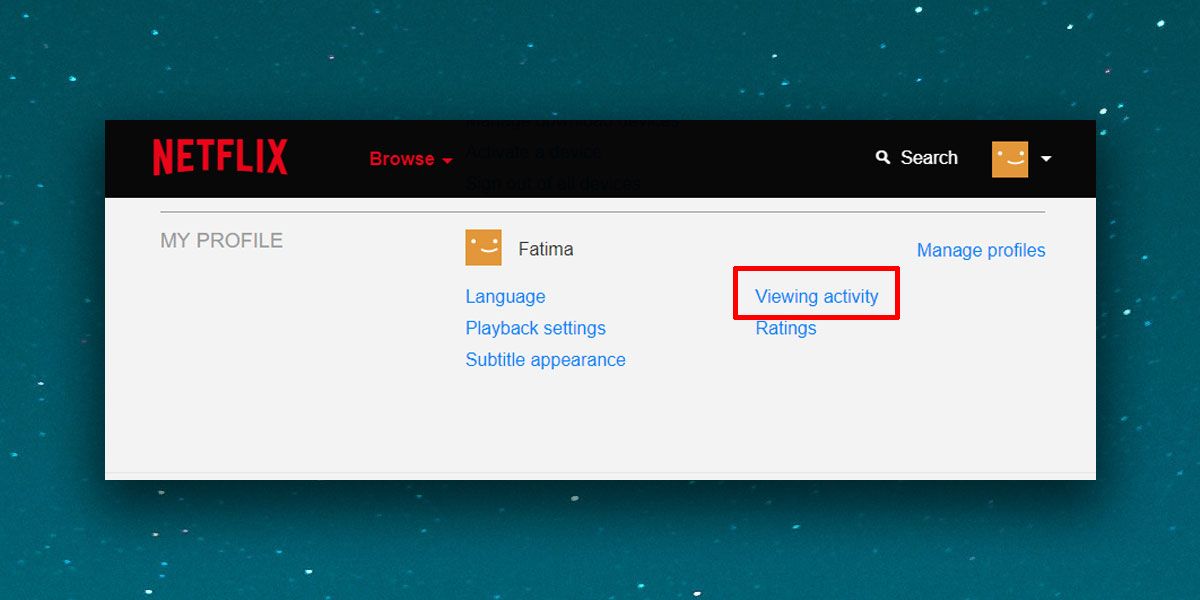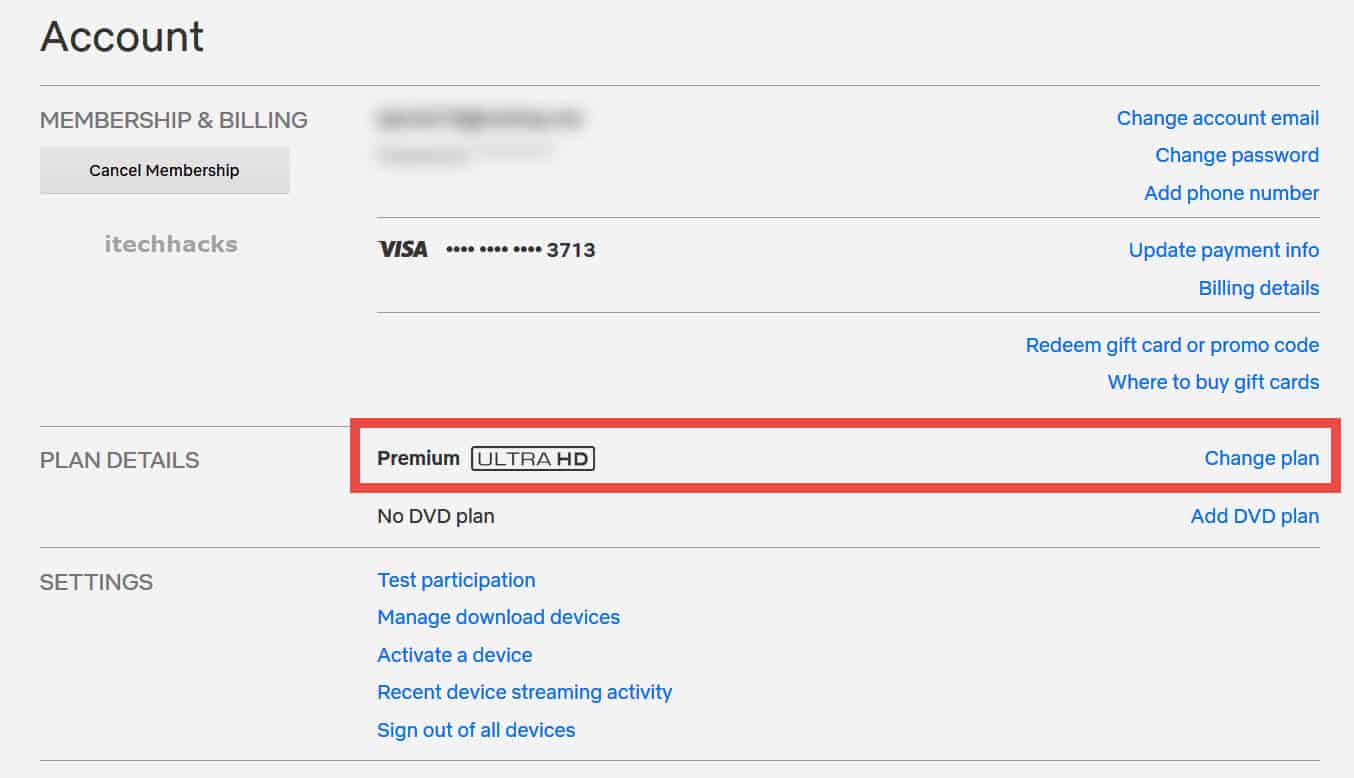Introduction
Streaming platforms have transformed the way we consume entertainment, and Netflix stands out as one of the most popular options available today. With its vast library of movies, TV shows, and documentaries, it’s no wonder why millions of people across the globe are hooked on Netflix. However, there may be instances when you want to save a particular scene, capture a favorite moment, or simply have the flexibility to watch content offline. This is where screen recording comes in handy.
In the following sections, we will explore the different methods and tools you can use to screen record Netflix. We will also discuss the legal and ethical considerations associated with this activity. Whether you want to create a compilation of your favorite movie scenes or save educational content for later, understanding the process of screen recording Netflix will provide you with the flexibility and convenience you desire.
It is essential to note that screen recording should be used responsibly and respectfully. Copyright laws and digital rights management protect the intellectual property of content creators. Therefore, it is crucial to be mindful of these legal and ethical considerations throughout the screen recording process. By adhering to these guidelines, you can enjoy the benefits of screen recording while respecting the rights of content creators.
Now, let’s delve into the world of screen recording and discover the various tools and techniques available for recording Netflix content.
Reasons for Wanting to Screen Record Netflix
There are numerous reasons why you might want to screen record Netflix. Here are some common scenarios where screen recording can come in handy:
- Offline Viewing: One of the primary reasons for screen recording Netflix is the ability to watch your favorite content offline. This is particularly useful during traveling or when internet connectivity is limited. By recording your desired shows or movies, you can enjoy them at your convenience, without the need for an internet connection.
- Memorable Moments: Netflix offers a wide range of compelling content, including captivating scenes and memorable moments. By screen recording, you can capture and relive those special moments or create curated compilations of your favorite scenes from different shows or movies.
- Study or Research Purposes: Netflix often features documentaries, educational series, and informative content that can be valuable for students or researchers. Screen recording allows you to save and review this content whenever necessary, providing you with a reliable resource for academic purposes.
- Capture Streaming Events: Sometimes, Netflix hosts exclusive live events or special broadcasts, such as award ceremonies or panel discussions. By screen recording, you can preserve these events and watch them later, even if you are unable to catch them in real-time.
- Content Creation: If you are a content creator, screen recording can be a valuable tool for incorporating Netflix content in your own videos or presentations. It allows you to integrate relevant clips and enhance the quality of your content, adding depth and context to your work.
It is important to emphasize that the reasons for screen recording should align with legality and ethics. Respect copyright laws and the intellectual property of content creators. Ensure that your screen recordings are for personal use, study purposes, or within the boundaries of fair use guidelines, where applicable.
Legal and Ethical Considerations
When it comes to screen recording Netflix or any other streaming platform, it is essential to understand the legal and ethical considerations surrounding this activity. While screen recording for personal use is generally permissible, it is important to be aware of the following:
- Copyright Laws: Content on Netflix is protected by copyright laws, which means that unauthorized copying, distribution, or sharing of copyrighted material is prohibited. Screen recording for personal use is generally considered fair use. However, sharing or distributing recorded content without the permission of the copyright holder is illegal.
- Terms of Service: Netflix has specific Terms of Service that users must adhere to. Reviewing and understanding these terms is crucial to ensure you are not violating any rules while screen recording. Keep in mind that Netflix may have specific restrictions on screen recording, so familiarize yourself with their policies.
- Fair Use: Fair use doctrine provides some leeway for the use of copyrighted material for limited purposes such as criticism, commentary, news reporting, teaching, scholarship, or research. However, determining fair use can be subjective, and it is advisable to consult legal resources or seek legal counsel if you are unsure about the boundaries of fair use.
- Respect for Intellectual Property: It is important to respect the intellectual property of content creators. Screen recording should be used for personal use or within the limits of fair use. Avoid sharing or distributing recorded content without permission, as this can infringe on the rights of the original creators.
- Regional Restrictions: Some content on Netflix may be subject to regional restrictions due to licensing agreements. Screen recording may not bypass these restrictions, and it is important to respect the limitations set by the platform and adhere to copyright and licensing laws.
It is crucial to note that the legality and ethical implications of screen recording may vary depending on your location and the specific circumstances. It is recommended to consult legal experts or refer to the copyright laws in your jurisdiction to ensure compliance when screen recording Netflix content.
Method 1: Using Built-in Screen Recording Features on Devices
Many devices today come equipped with built-in screen recording features, making it convenient to record your screen, including Netflix content. The following steps outline the process for using the built-in screen recording feature on some popular devices:
- For iOS Devices (iPhone/iPad):
- Open the “Settings” app on your device.
- Scroll down and tap on “Control Center.”
- Tap on “Customize Controls.”
- Under “More Controls,” locate “Screen Recording” and tap on the green “+” button to add it to your Control Center.
- Exit the Settings app.
- Open the Control Center by swiping down from the top-right corner (on iPhone X and later) or swiping up from the bottom (on iPhone 8 and earlier).
- Tap on the “Record” button (a circle within a circle) to start recording.
- A countdown timer will appear, giving you a few seconds to navigate to the Netflix app.
- Once on the Netflix app, play the content you want to record.
- When you are finished recording, open the Control Center again and tap on the red “Record” button to stop the recording.
- The recorded video will be saved to your Photos app.
- For Android Devices:
- Android devices have varying methods of accessing the screen recording feature, depending on the device manufacturer and Android version.
- Swipe down from the top of the screen to access the Quick Settings panel.
- Look for the “Screen Recording” or “Screen Capture” option.
- Tap on the icon to start recording.
- Once the recording begins, navigate to the Netflix app and play the desired content.
- To stop the recording, access the Quick Settings panel again and tap on the “Stop” or “Record” button.
- The recorded video will be saved to your device’s default storage location or gallery app.
It is important to note that the exact steps may vary depending on the device and operating system version. Refer to your device’s user manual or perform an online search for specific instructions if you encounter any difficulties.
Method 2: Utilizing Third-Party Screen Recording Software
If your device doesn’t have a built-in screen recording feature or if you’re looking for more advanced options, you can consider using third-party screen recording software. These software tools offer additional features and customization options for screen recording, including recording Netflix content. Follow these general steps to utilize third-party screen recording software:
- Research and Choose a Screen Recording Software: Explore the available options for screen recording software. Look for reputable software that is compatible with your device and meets your requirements. Read reviews and compare features before making a selection.
- Download and Install the Software: Visit the official website of the chosen software and download the installation file. Follow the instructions provided by the software developer to install it on your device.
- Launch the Screen Recording Software: Open the installed software on your device. Familiarize yourself with the interface and available options.
- Configure Recording Settings: Adjust the recording settings according to your preferences. These settings may include video quality, audio source, recording format, and other specific options provided by the software.
- Select the Netflix Window or Full Screen: Choose the option to record a specific window or the entire screen. If recording a specific window, select the Netflix window once it is open and ready to play the content.
- Start the Recording: Begin the recording process by clicking the “Record” or equivalent button in the software interface. Ensure that the software is capturing the intended screen area.
- Play the Netflix Content: Launch the Netflix app or website and play the desired content that you want to record. The software will start recording the screen and audio output as per your configuration.
- Stop and Save the Recording: When you’ve finished recording the desired content, click the “Stop” or equivalent button in the software interface. The screen recording software will stop capturing and prompt you to save the recorded file to your preferred location.
- Review and Edit (if necessary): Some screen recording software provides basic editing features. If required, you can trim, cut, or enhance your recorded video before saving it.
Remember to consult the documentation or user guide provided by the screen recording software for specific instructions and troubleshooting guidance. Make sure to use reputable software from trusted sources and ensure that the software is up-to-date to minimize security risks on your device.
Step-by-Step Guide for Screen Recording Netflix on Different Devices
Screen recording Netflix on different devices may require specific instructions due to variations in operating systems and device features. Here is a general step-by-step guide for screen recording Netflix on various devices:
- Windows PC:
- Ensure that you have screen recording software installed on your PC. Popular options include OBS Studio, Camtasia, or Bandicam.
- Open the Netflix website on your web browser and sign in to your account.
- Launch the screen recording software and configure the recording settings, such as the capture area, video quality, and audio source.
- Position and resize the recording frame to encompass the Netflix window or the specific portion of the screen where the content will play.
- Start the recording in the screen recording software and then play the desired Netflix content.
- When finished, stop the recording and save it to your preferred location on your PC.
- Mac:
- On a Mac, you can use the built-in screen recording tool called QuickTime Player.
- Open QuickTime Player from the Applications folder.
- Go to “File” in the menu bar and choose “New Screen Recording.”
- Click on the record button and select either the full screen or a specific portion of the screen where Netflix will be playing.
- Once the recording area is selected, click on the “Record” button to start recording.
- Play the Netflix content and adjust the volume as needed.
- To stop the recording, click on the “Stop” button in the menu bar or press Command + Control + Esc.
- Save the recording at your desired location on your Mac.
- Smartphones and Tablets:
- Make sure your device has a built-in screen recording feature or install a third-party screen recording app from your device’s app store.
- Open the Netflix app on your device and sign in to your account.
- Access the screen recording feature on your device (e.g., swipe down from the top of the screen and tap the screen recording icon in the control center for iOS devices).
- Start the recording and navigate to the Netflix app to play the desired content.
- Stop the recording when finished and save the recorded video to your device’s gallery or a preferred location.
These are general steps for screen recording Netflix on different devices. However, depending on your specific device model and operating system version, the steps may vary slightly. Refer to the user manual or consult online resources for device-specific instructions if needed.
Tips for a High-Quality Screen Recording
When screen recording Netflix or any other content, following these tips can help you achieve a high-quality recording:
- Choose the Right Screen Size: Select the appropriate screen size or resolution for your recording. Ensure that the screen size matches the aspect ratio of the content you are recording to avoid any distortion or black bars.
- Optimize Lighting Conditions: Record in a well-lit environment to capture clear visuals. Avoid excessive backlighting or glare that can obscure the content being recorded.
- Use a Stable Connection: If you are recording a streaming service like Netflix, a stable internet connection is essential. A poor connection can result in buffering, lag, or interruptions in the recorded video.
- Check Audio Settings: Double-check that your audio settings are correctly configured. Ensure that the microphone is picking up clear and balanced audio without any background noise or distortion.
- Close Unnecessary Applications: Close any unnecessary applications or processes running in the background to free up system resources. This can help prevent lag or performance issues during the recording.
- Monitor Storage Space: Ensure that you have sufficient storage space available on your device or storage medium. Running out of storage during a recording can lead to incomplete or corrupted recordings.
- Consider Frame Rate and Bitrate: Adjust the frame rate and bitrate settings based on the requirements of your recording. Higher frame rates and bitrates can result in smoother playback and better video quality, but they may require more resources and storage space.
- Minimize Distractions: Before starting the recording, remove any distractions such as pop-up notifications, background apps, or desktop icons that may be visible during the recording.
- Practice, Test, and Review: Familiarize yourself with the screen recording software or device features beforehand. Test the recording settings, review sample recordings, and make any necessary adjustments to ensure everything is set up correctly before recording the actual content.
- Edit and Enhance: Consider using video editing software to enhance the quality of your screen recordings. Trim any unwanted portions, adjust color or audio levels, and include captions or annotations if necessary.
By following these tips and adapting them to your specific recording setup, you can capture high-quality screen recordings of Netflix content, ensuring a enjoyable viewing experience for yourself and others.
Troubleshooting Screen Recording Issues
While screen recording Netflix or any other content, you may encounter some issues. Here are some common troubleshooting steps to resolve potential problems:
- No Sound in the Recording: Check the audio settings of your device or screen recording software to ensure that the correct audio source is selected. Verify that the volume is turned up and not muted during the recording.
- Low Frame Rate or Choppiness: If your screen recording appears choppy or has a low frame rate, try reducing the recording resolution or lowering the bitrate. Closing unnecessary applications or processes running in the background can also help improve performance.
- Recording Lag or Delay: Lag or delay in the recording can occur due to various factors, such as a slow internet connection or insufficient system resources. Ensure that you have a stable internet connection and close any unnecessary applications or processes to mitigate lag.
- Black Screen or Flickering: If you are recording a black screen or experiencing flickering, it may indicate compatibility issues with the screen recording software or device settings. Try updating your screen recording software, drivers, or operating system to the latest version.
- Unresponsive or Freezing Screen Recording: If your screen recording software freezes or becomes unresponsive, try closing and reopening the program. Restart your device if necessary. If the issue persists, consider using a different screen recording software or consulting the software’s support resources.
- Insufficient Storage Space: If you receive an error message indicating insufficient storage, make sure you have enough free space on your device or storage medium. Delete unnecessary files or transfer existing files to an external storage device to free up space for your screen recording.
- Unsupported Content: Some streaming platforms may employ measures to prevent screen recording of certain content. If you encounter an error or are unable to record specific Netflix content, it may be protected against screen recording. In such cases, respecting the platform’s restrictions is advisable.
- Device-Specific Issues: If you encounter device-specific issues, refer to the user manual or consult online resources for troubleshooting steps specific to your device model and operating system.
If you are unable to resolve screen recording issues using the above troubleshooting steps, consider seeking assistance from the software developer’s support channels or consulting online forums and communities specializing in screen recording or device-specific troubleshooting.
Alternatives to Screen Recording Netflix
If screen recording Netflix doesn’t align with your preferences or if you encounter challenges with the process, there are alternative methods to access and enjoy Netflix content offline:
- Offline Download Feature: Netflix offers an offline download feature that allows you to download select movies and TV shows onto your device. This feature enables you to access and watch the downloaded content without requiring an internet connection.
- Streaming Device Storage: Some streaming devices, such as certain models of Apple TV, Roku, or Amazon Fire TV, offer internal storage or external USB storage options. You can download and store Netflix content directly on the streaming device for offline viewing.
- Mobile Data Saving Options: If you want to conserve mobile data while streaming Netflix on mobile devices, you can use the “Data Saver” feature provided by the Netflix app. This feature optimizes the video quality to use less data without compromising the overall viewing experience.
- Netflix Smart Downloads: The Netflix app has a Smart Downloads feature that automatically downloads the next episode of a TV series after you finish watching a downloaded episode. This feature ensures that you always have fresh content available for offline viewing.
- DVD Rental Services: Consider using DVD rental services that offer physical discs of Netflix content delivered to your doorstep. Services such as Netflix DVD or local DVD rental stores allow you to enjoy Netflix content offline by renting the DVDs.
- On-Demand DVD Burners: There are on-demand DVD burning services available that allow you to legally purchase and burn Netflix content onto DVDs or USB drives. These services ensure that you can watch your favorite Netflix content offline on specific devices that support DVD playback.
- Screen Mirroring or Casting: Utilize screen mirroring or casting features available on streaming devices, smart TVs, or compatible tablets to project Netflix content onto larger screens. This allows you to enjoy Netflix on a bigger display without the need for screen recording.
These alternatives offer viable options for accessing and enjoying Netflix content offline without the need for screen recording. Consider the specific features and limitations of each alternative to determine the best approach that suits your preferences and device capabilities.
Conclusion
Screen recording Netflix can provide you with the convenience and flexibility to enjoy your favorite movies, TV shows, and documentaries offline. However, it is important to be mindful of the legal and ethical considerations associated with screen recording, respecting copyright laws and the intellectual property of content creators.
In this article, we explored two methods for screen recording Netflix. Using built-in screen recording features on devices allows for a straightforward recording process, while utilizing third-party screen recording software offers additional customization options. We also provided a step-by-step guide for screen recording Netflix on different devices, along with tips for achieving a high-quality recording.
It is essential to keep in mind that there are alternative ways to access and enjoy Netflix content offline without resorting to screen recording. Netflix’s own offline download feature, streaming device storage, and mobile data-saving options provide viable alternatives for offline viewing.
Remember to troubleshoot any screen recording issues that may arise, addressing common problems such as audio and video quality, lag, or compatibility issues. Explore alternative methods if you encounter challenges or prefer different approaches to accessing Netflix content offline.
By following the guidelines, being aware of legal and ethical considerations, and exploring the various options available, you can make informed decisions about screen recording Netflix and enjoy your favorite content anytime, anywhere.

























